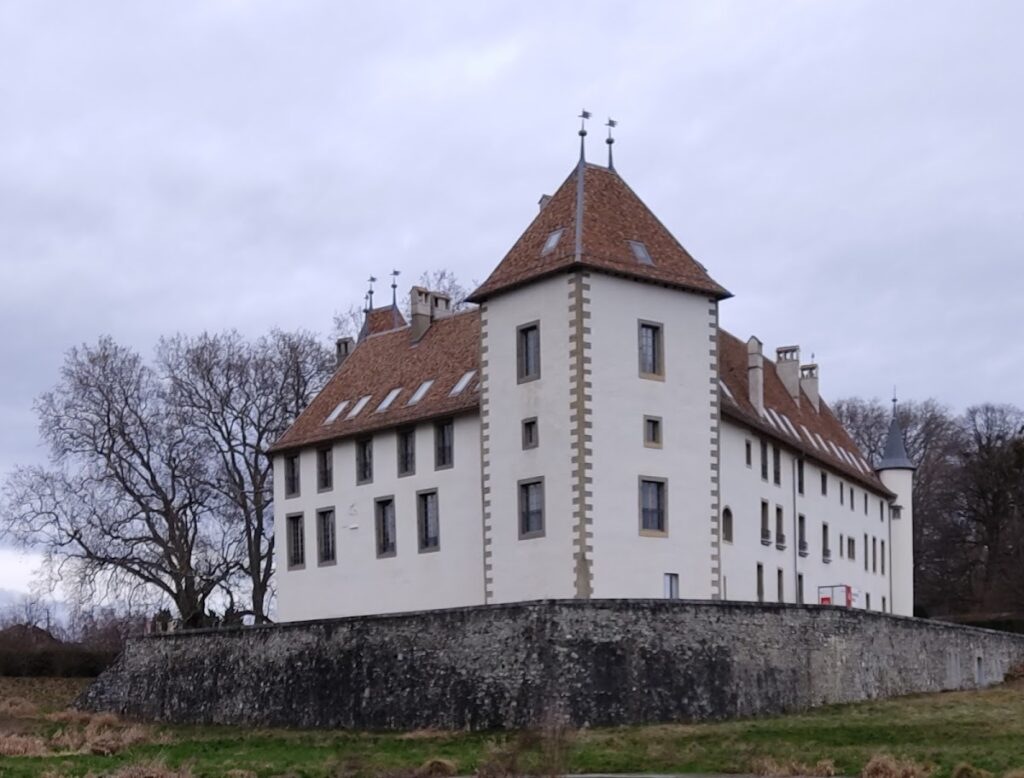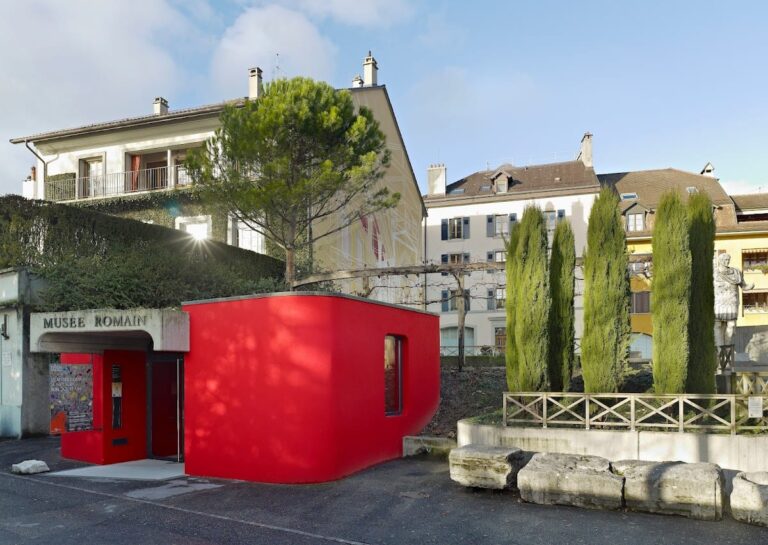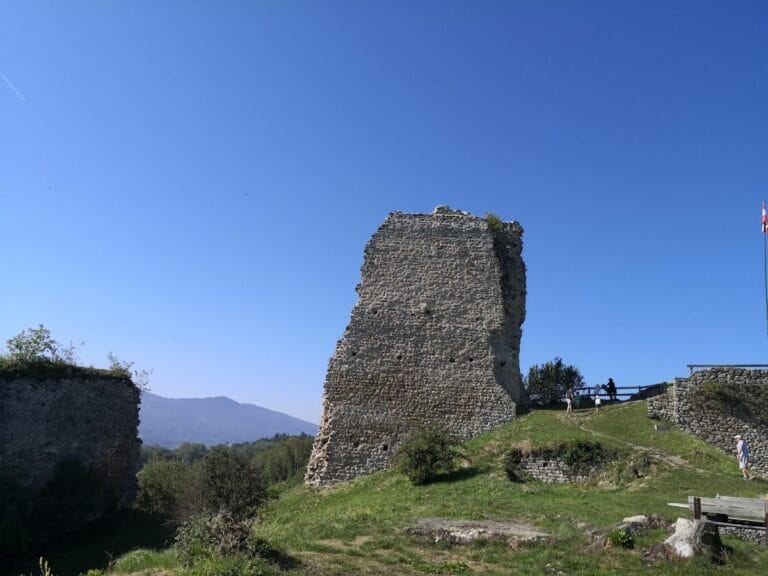Allaman Castle: A Historic Medieval and Noble Residence in Switzerland
Visitor Information
Google Rating: 3.9
Popularity: Very Low
Google Maps: View on Google Maps
Official Website: www.chateauallaman.com
Country: Switzerland
Civilization: Unclassified
Remains: Military
History
Allaman Castle is situated in the municipality of Allaman, Switzerland, and was constructed by medieval European builders during the High Middle Ages. Its origins trace back to the 11th or 12th century, with significant construction work undertaken in 1253 under Louis, Duke of Savoy and Count of Vaud. The castle occupies a strategic position on a terrace overlooking the vital roadway connecting Geneva and Lausanne, granting control over access routes to Lake Geneva, Aubonne, and the Marchairuz pass.
A ministerial family known as d’Allaman, documented from 1219, likely possessed an early fortified residence at the site before the castle’s establishment. The first explicit mention of Allaman Castle dates to 1375, although tree-ring dating of wooden elements in the southeast wall indicates construction or modification around 1291–1292. During the 14th and 15th centuries, ownership of the castle shifted several times, reflecting broader regional power dynamics. A notable event occurred in 1530 when Swiss Confederate forces burned the castle amid the conflict known as the “Chevaliers de la Cuiller” affair.
Following this destruction, the castle changed hands several times. In 1546, it passed to Jean Challet, a notary, and the following year the Cerjat family acquired it. The Cerjats introduced architectural enhancements such as arcades supported by columns enclosing the courtyard. The 18th century marked a phase of significant transformation under the stewardship of Marquise Jeanne-Marguerite de Langallerie, owner from 1723, and later Gaspard Sellon around 1757. These owners replaced the medieval defenses with graceful features more suited to noble residence, including a monumental façade adorned with a pediment facing the courtyard.
Around 1790, Jean de Sellon enriched the castle’s interiors with rare French wallpaper panels that remain notable for their artistic value. Early in the 19th century, Jean-Jacques de Sellon continued the interior enhancements. He was a prominent pacifist and patron of the arts who brought the castle into a wider historical spotlight by welcoming distinguished figures such as Joseph Bonaparte, Empress Joséphine, composer Franz Liszt, writer George Sand, and statesman Camillo Cavour.
In 1820, Jean-Jacques founded the Society of Peace at Allaman Castle, an early international peace organization that anticipated later efforts like the League of Nations and the United Nations. The castle hosted the first International Peace Summit in 1830, emphasizing its role as a venue for diplomacy and intellectual exchange. That same century, the Sellon family daughters introduced a neo-Gothic style to the eastern wing’s façade around 1845.
The castle experienced a revival of medieval-inspired interior decoration in the 1940s under Gérard de Loriol, a banker who oversaw renovations reminiscent of the nearby Château Chillon. Throughout the late 20th and early 21st centuries, Allaman Castle changed owners multiple times, including possession by a local wine company and later a German investor. Financial difficulties led to further sales until the Franck Muller Group acquired the property in 2022 for use as an event venue.
Since 1975, Allaman Castle has been protected as a Swiss historical monument and recognized as a cultural property of national importance. Between 2009 and 2015, the castle underwent extensive restoration to preserve its architectural integrity and maintain its status as one of Switzerland’s largest private estates.
Remains
Allaman Castle stands prominently on a raised terrace overlooking the historic road from Geneva to Lausanne. The site’s layout reflects its evolution from a medieval stronghold into a noble residence, blending defensive elements with later architectural refinements. Constructed mainly from local stone, the castle complex is surrounded by private woodland, gardens, and a vineyard spanning fifteen hectares, producing the renowned Château d’Allaman wine. The entire estate covers roughly 33 hectares, with living spaces totaling about 6,200 square meters, highlighting its considerable scale.
One of the castle’s enduring architectural features is the courtyard framed by arcades resting on columns, a design element introduced in the 16th century by the Cerjat family. This elegant courtyard replaces earlier defensive structures that included a moat, enclosing walls, and a drawbridge, all removed during the 18th-century remodeling to suit a more residential and representative function. The façade facing the courtyard exhibits a classical pediment that dates to around 1757, a significant enhancement attributed to Gaspard Sellon.
The interiors preserve exceptional decorative elements, notably the French wallpaper panels installed circa 1790 by Jean de Sellon. These panels are considered rare and valuable relics of late 18th-century interior design and contribute to the historic atmosphere of the living quarters. During the 1940s renovations, the interiors were further embellished with motifs and furnishings inspired by medieval castles, reflecting the style of Château Chillon and adding a nostalgic character to the historic rooms.
Beyond the main buildings, the castle grounds include an English-style garden featuring a pond created at the turn of the 19th century by Jean-Jacques de Sellon, blending naturalistic landscaping with the estate’s heritage. The Armary irrigation canal runs through the park and vineyard; historically, it supplied power to the lordly mill of Allaman, underscoring the castle’s integration with surrounding economic activities.
The surrounding park and small ancillary buildings form part of the estate, which overlooks the Chanivaz landscape and the Aubonne river delta leading to Lake Geneva. Careful restoration efforts completed between 2009 and 2015 have ensured that the castle’s fabric remains in good condition, maintaining its historical features while supporting its ongoing use as a private residence and venue.







